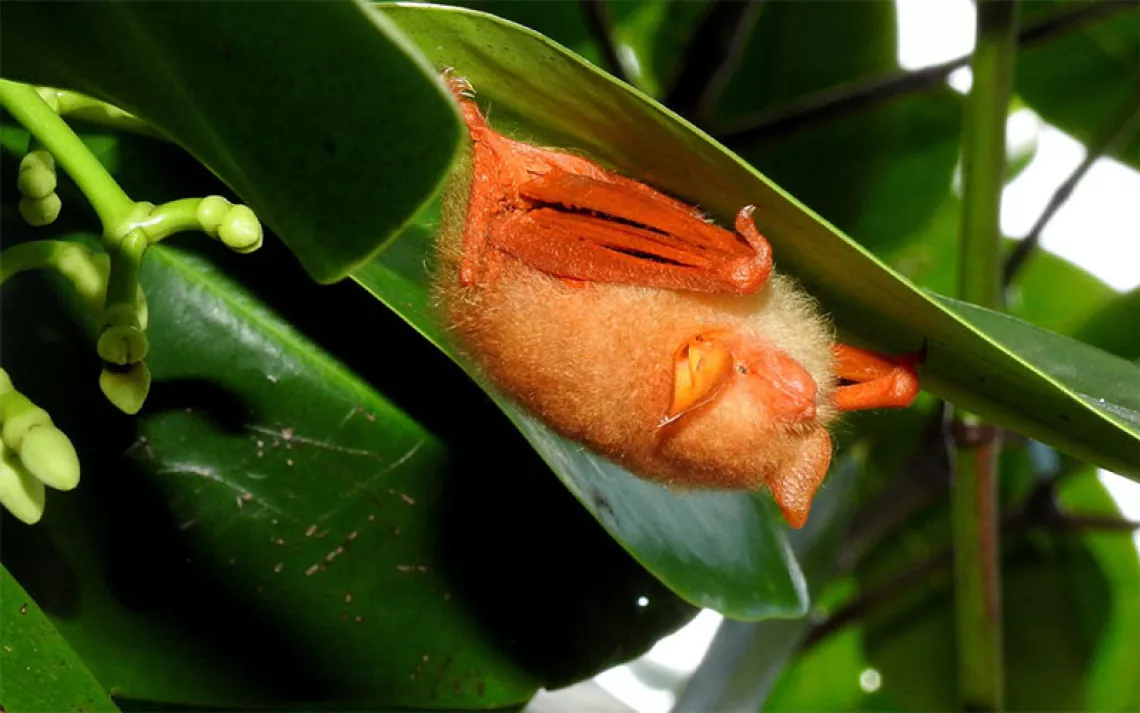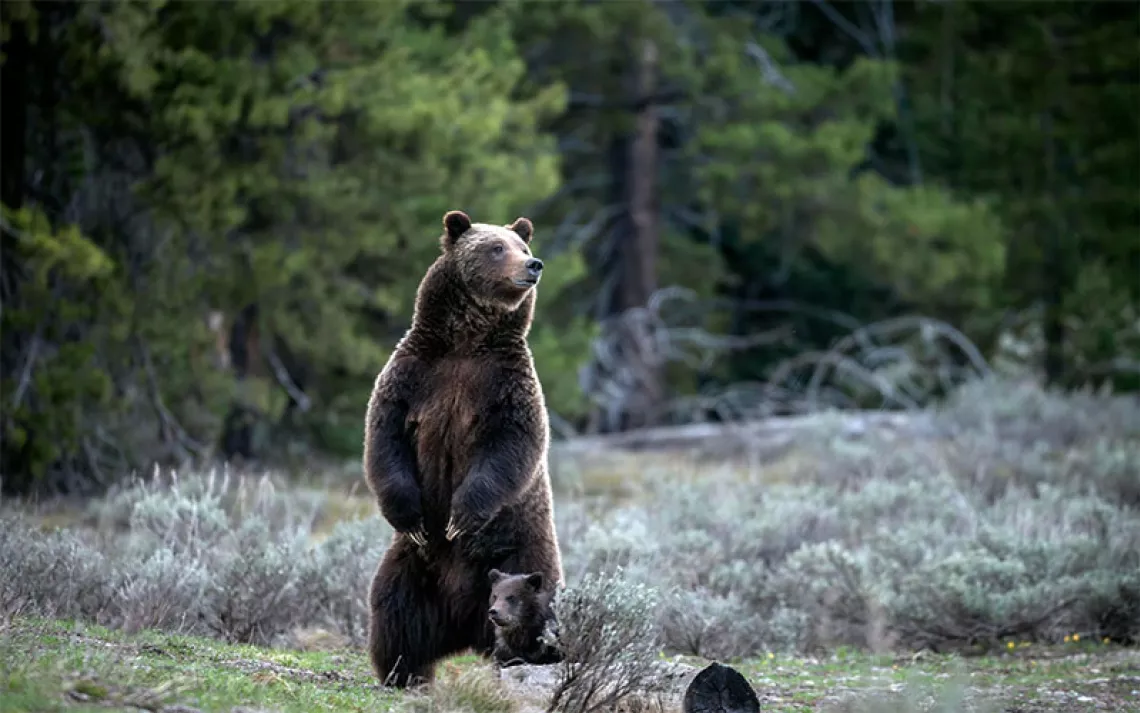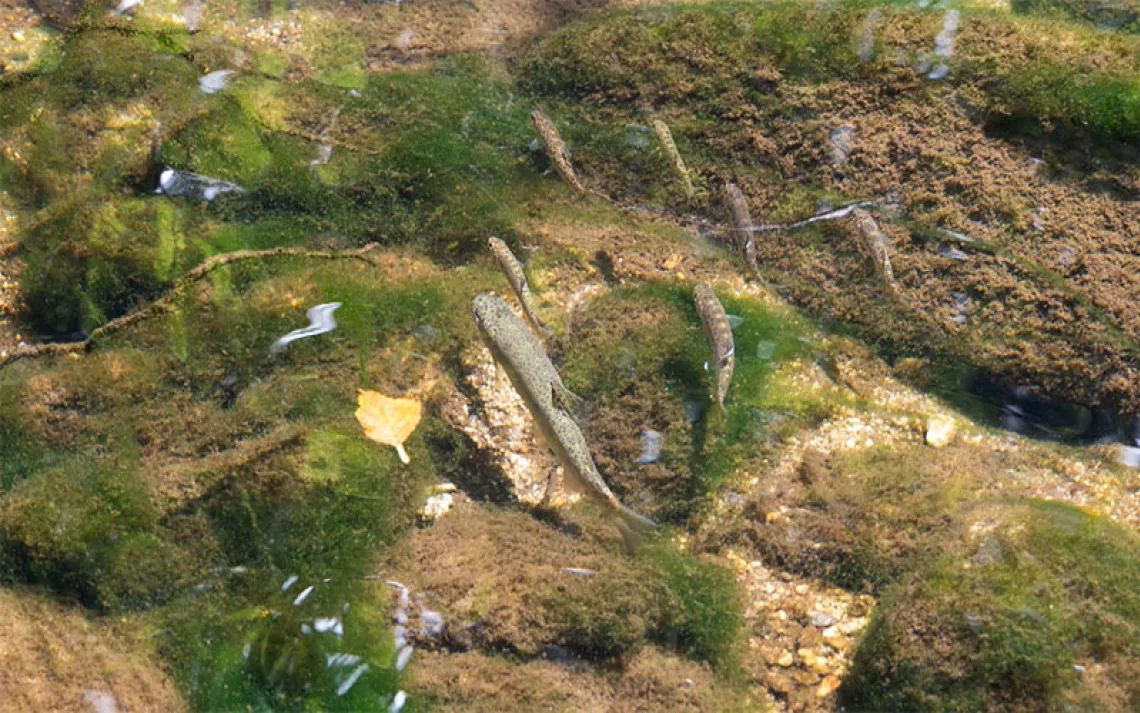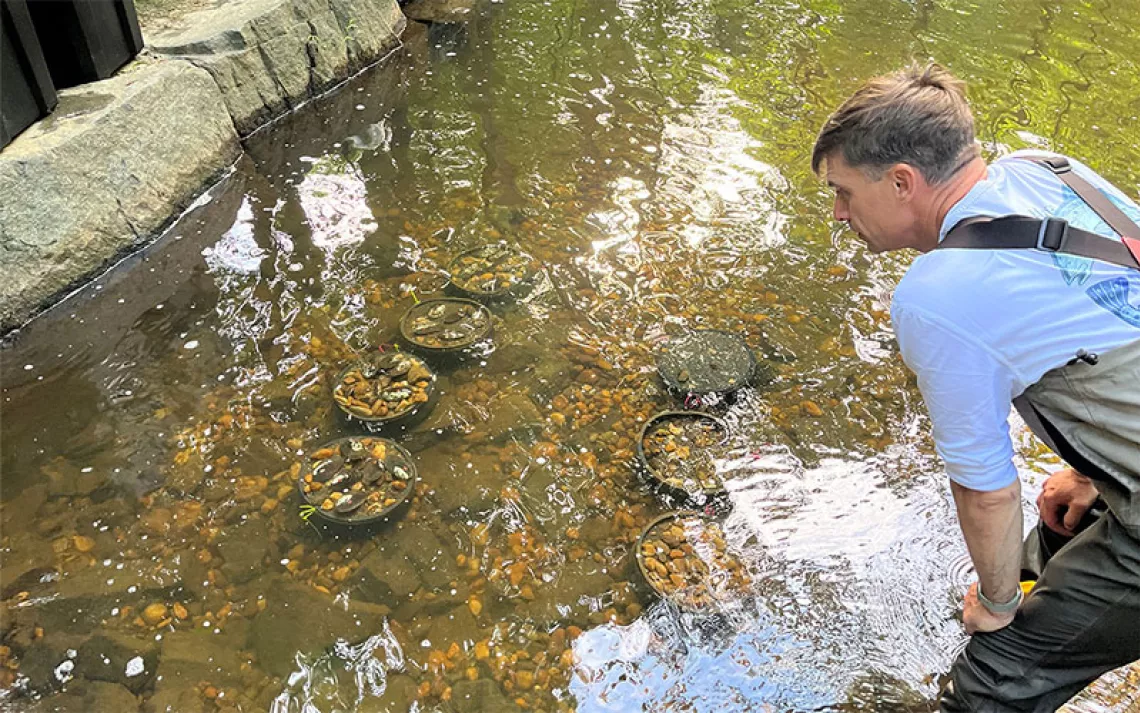Do Western Lichens Need Federal Protections?
Entire species of lichen could be wiped out if greater protections aren’t put in place to protect them
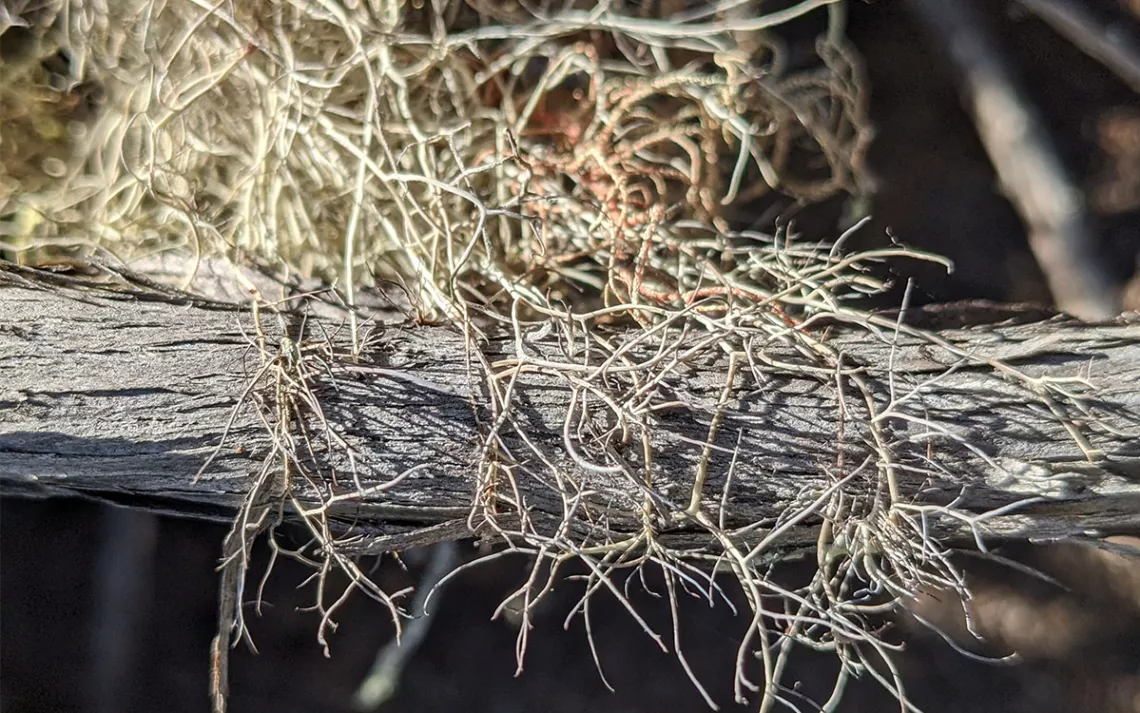
Splitting yarn lichen (sulcaria isidiifera). | Photo by Eli Balderas
For over a year, Jesse Miller, a charismatic ecologist in his forties, has been on the hunt for a very rare Pacific Northwest lichen called cryptic paw. As the president of the California Lichen Society, Miller is familiar with this species, but to my untrained eyes, it looks like a cross between a preserved human brain and kale left in the fridge for too long.
This past spring, I joined Miller in a stand of old-growth trees in the Gifford Pinchot National Forest in Washington State. Cryptic paw lichen (Nephroma occultum) is listed as a “sensitive” species by the State of Washington, meaning it is at risk of being endangered. Last year, Miller visited five old-growth forest sites in the state that used to contain populations of the cryptic paw lichen. “And I didn’t actually find any of them,” he said. “That was really surprising because the habitat seemed right.”
To address the problem, Miller and a growing number of lichenologists have started a campaign to get lichens in the western United States federal protections. “Right now, no one is paying attention to these rare lichens,” Miller said. “Part of the reason is that, in the West, we don’t have rare lichens that are federally listed under the Endangered Species Act.”
To date, only two lichen species have ESA protections—“Florida perforate reindeer lichen” and “rock gnome lichen.” Both species are endemic to the eastern United States and are listed as endangered.
In addition to leading the California Lichen Society, Miller is also the lead state botanist for the Washington State Department of Natural Resources, where he researches rare plants and their conservation for the state’s Natural Heritage Program. During our interviews, Miller stressed that his efforts to bring attention to rare lichens is being done in his spare time. His opinions concerning ESA protections reflect his concerns as an independent scientist and do not represent the official views of the state agency. Miller, citing Washington state policy, also won’t be filing any ESA petitions himself, but says he will be acting in a supporting role for others.
The problem of monitoring
Miller told me that getting ESA protections for rare lichens in the West would be “a complete game-changer” because it would not only provide funding to help restore populations but would also support monitoring projects and studies. Yet, he also says the process is an uphill battle. A huge part of the problem has to do with monitoring. “It’s a Catch-22,” Miller said. “You don’t know how rare something is until you look, and you can’t really look until you have funding.”
To get over this hurdle, Miller and others are simply doing the monitoring where they can and in their spare time. “It would be fantastic to have some of these … species actually formally recognized as endangered or threatened [under the ESA],” said Jessica Allen, an associate professor at Eastern Washington University. Although current monitoring work is largely underfunded and nearly nonexistent for many lichens, what has been done suggests some lichens could be far more threatened than previously thought, according to Allen, who has been at the forefront of this monitoring effort.
Since 2018, Allen has co-led the lichen specialist group at the International Union for Conservation of Nature’s Red List of Threatened Species, coauthoring the assessments of over 30 lichen species. However, this represents a recent change and growing scientific interest in lichens. Prior to 2015, lichens—and fungi in general—were “nearly absent” from the Red List, according to a 2022 study coauthored by Allen that was published in the journal Diversity. At the time, the list included nearly 600 species of fungi, only 94 of which were lichens. More were included only after a group of scientists kickstarted a concerted effort to track the threat status of the world’s fungi, lichens among them.
The IUCN’s Red List assessments, as well as the NatureServe’s similar Conservation Status Assessments, while not enough to prove ESA protections are needed, are nonetheless seen by lichenologists as an essential first step in petitioning the US Fish and Wildlife Service (USFWS) for federal protections.
Twenty-seven-year-old Eli Balderas, a recent graduate of California Polytechnic State University in San Luis Obispo, is one person hoping to use a lichen’s IUCN Red List status in an ESA petition to the USFWS. For his master’s thesis, Balderas studiedchaparralSan Luis Obispo County on California’s central coast.
is listed as critically endangered on the IUCN Red List, one step below “extinct in the wild” and two steps below extinct. With the backing of Miller and the California Lichen Society, Balderas is using his extensive master’s thesis on as a jumping-off point to get the species listed under the Endangered Species Act. Though, he said, it’s likely to be a slow process. (He too is pursuing his lichen-saving quest in his free time.) “[Splitting yarn] faces a lot of threats, from climate change to development, and could potentially even become extinct if nothing happens to protect it,” Balderas said.
According to him, the USFWS doesn’t typically take the initiative to get a species listed. Instead, species get listed when concerned outsiders petition for protections, and even then, it can be a tricky process. He said
“Oprah’s sunshine,” “Dolly’s Dots,” and “fairy puke”
Allen says another issue faced by efforts to get lichens ESA protections is that they simply have failed to capture the public’s imagination in the same way large animals (think elephants and pandas) or large trees (think coast redwoods and giant sequoias) have.
As she wrote in a 2019 article in the journal Biodiversity and Conservation, “[t]he amount of conservation attention an organism receives is usually based on its public appeal, and thus strongly favors large mammals and birds.” Compared to the so-called charismatic megafauna and megaflora that take up the largest niches in the collective imagination, small, out-the-way lichens can’t compare.
Or can they? Allen thinks they can if we start to see lichens for what they are, “coral on land.” While lichens are frequently referred to as a single species, in reality, they are symbiotic communities of organisms involving at least one fungus and one photosynthesizing partner, namely algae or cyanobacteria. The photosynthesizers create food for the fungi, while the fungi provide structure—the home—for their chlorophyll-containing partners to live in.
“Like coral, lichens share the symbiosis factor. There’s this living together of all … these really distantly related organisms that somehow, when they are together, build this beautiful structure that is somewhat otherworldly,” Allen said. “They’re absolutely gorgeous once you stop to take a closer look.”
But their symbiotic nature also makes some lichens both rare and vulnerable to disruptions of all kinds, including pollution, climate change, wildfire, and habitat loss. This is especially true of old-growth obligate lichens (lichens found only in old-growth forests like the one Miller and I visited in Washington State). “Many lichens are old-growth obligate lichens,” Miller said. “Because old-growth forests have become so rare all over the world … many old-growth obligate lichens are now considered rare species.”
In the Gifford Pinchot National Forest, Miller and I soon found some lichens common in old-growth forests. The first is Oregon lungwort (or “lettuce lichen”). Somewhat reminiscent of a leathery cabbage, the lichen lives high in the upper canopy, but it can easily be found on the ground, where it frequently falls. There are also “coral lichens” that seem to sprout from the thick, textured bark of the old Douglas firs. We also found lichens common to both old-growth and second-growth forests, including pumpkin pie lichen and the evocatively named fairy puke lichen, which looks like the color of … well, puke-green baby vomit.
But we didn't find any cryptic paw lichen. Miller, however, remained positive. “Despite the population declines we’re seeing, we have more information than we’ve ever had about these species,” he said. “We have more interest among the general public … and I think we’re more prepared than ever to push the science further for conserving these lichens. So, I think there are a lot of reasons to have a positive outlook for the future despite the challenges we face.”
 The Magazine of The Sierra Club
The Magazine of The Sierra Club
